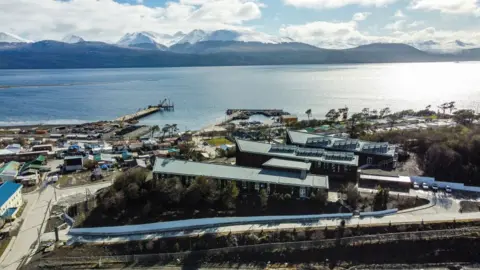On May 2, 2025, Chile issued a tsunami warning and advised residents to evacuate coastal regions following a significant earthquake. The notification was particularly focused on the Magallanes region, located at the southern tip of the country, as well as parts of the Chilean Antarctic Territory. This critical alert came in the wake of a powerful earthquake, which was measured at a magnitude of 7.4. The seismic event occurred approximately 219 kilometers (or 136 miles) off the coast near Ushuaia, a city in neighboring Argentina. The United States Geological Survey reported this incident, which caused considerable unease among residents in both Chile and Argentina.
Reports indicate that the earthquake’s tremors reached Ushuaia, where local media confirmed that residents felt the impact. Following the initial earthquake, several aftershocks were reported in the area, which added to the anxiety of local inhabitants. In response to the unfolding situation, Chilean authorities swiftly acted by issuing evacuation orders to ensure the safety of those living in vulnerable coastal zones.
In a post shared on X, the platform formerly known as Twitter, Chilean President Gabriel Boric called for immediate evacuation along the coastline throughout the Magallanes region. His statement emphasized the seriousness of the situation, assuring citizens that all necessary state resources would be mobilized to address potential consequences stemming from the earthquake. The country’s disaster management agency recommended residents maintain a level of calm and follow all instructions provided by local authorities and emergency response teams.
Moving forward, safety protocols dictated that residents evacuate to higher ground—specifically to areas at least 30 meters above sea level—to minimize risk. Reports from local media indicated that roughly 1,100 residents had already been evacuated from the southern town of Puerto Williams. Evacuation footage shared across social media channels depicted scenes of people leaving their homes amid the sound of blaring sirens, capturing the urgency of the situation while showing relative calm among the evacuees.
The earthquake struck within the Drake Passage, situated between Cape Horn and Antarctica, with its epicenter located at a depth of about 10 kilometers (6 miles). In light of the event, Chile’s Antarctic institute (INAHC) mentioned that bases in the Antarctic region were being evacuated, showcasing the widespread implications of the earthquake beyond just mainland Chile.
A map illustrating the extent of the earthquake’s epicenter alongside its geographical context highlighted that these seismic activities occurred in close proximity to both Chile and Argentina, further complicating the situation. As emergency management teams began to assess the ramifications of the earthquake, Chile’s government collaboration with local officials was evident in their coordinated response efforts.
The gravity of these developments cannot be understated, especially considering the region’s history with seismic activity due to its location along the Pacific Ring of Fire. As authorities worked diligently to safeguard the well-being of citizens, ongoing updates from reliable news outlets were expected. The unfolding story continues as more precise details will emerge in the coming hours.
In the meantime, individuals seeking updates were encouraged to download the BBC News App to receive immediate alerts or follow @BBCBreaking on X for the latest information. As the nation grapples with the sudden natural disaster, residents remained hopeful that they would weather the crisis while relying on governmental support and emergency strategies. Overall, the community’s resilience was on display during this unsettling event, exemplifying the spirit of collaboration in the face of natural adversities.



